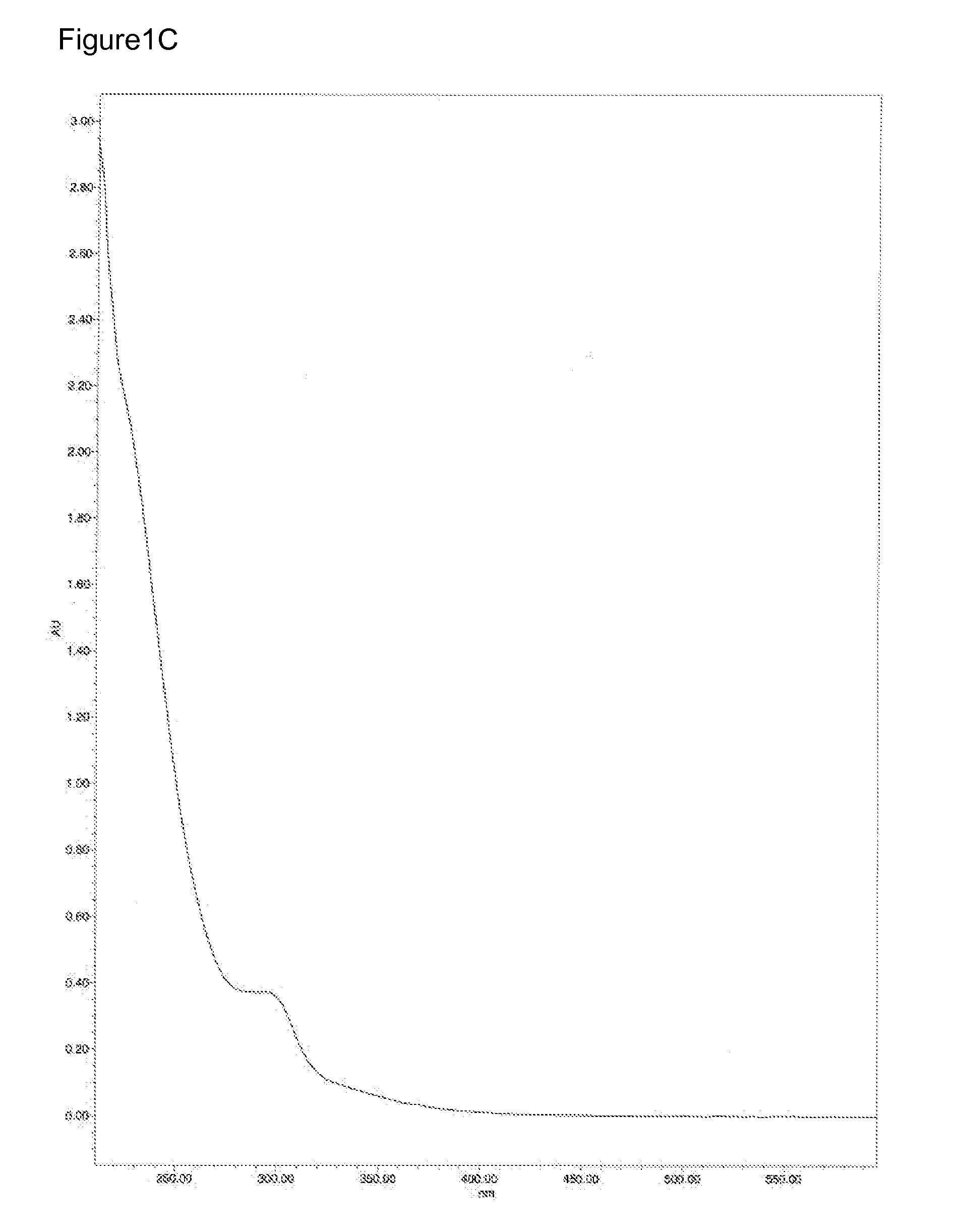Methods for treating ras driven cancer in a subject
a technology of ras and analogues, applied in the field of dibenzodiazepinone analogues, can solve the problems of ras accumulation, and achieve the effects of inhibiting growth, inhibiting activity, and reducing ozonolysis
- Summary
- Abstract
- Description
- Claims
- Application Information
AI Technical Summary
Benefits of technology
Problems solved by technology
Method used
Image
Examples
example 1
Production of Compound 1 by Fermentation
a) Fermentation Procedure:
[0218]Micromonospora sp. (deposit accession number IDAC 070303-01) was maintained on agar plates of ISP2 agar (Difco Laboratories, Detroit, Mich.). An inoculum for the production phase was prepared by transferring the surface growth of the Micromonospora sp. from the agar plates to 125-mL flasks containing 25 mL of sterile medium comprised of glucose 10 g, potato dextrin type IV (Sigma) 20 g, yeast extract 5 g, N Z Amine-A 5 g, 1 g CaCO3 made up to one liter with tap water (pH 7.0). The culture was incubated at about 28° C. for approximately 70-72 hours on a rotary shaker set at 250 rpm. Following incubation, 10 mL of culture was transferred to a 2 L baffled flask containing 600 mL of sterile production medium containing 20 g / L potato dextrin type IV (sigma), 30 g / L glycerol, 2.5 g / L Bacto-peptone, 8.34 g / L yeast extract, 3 g / L CaCO3, pH 7.0. Fermentation broth was prepared by incubating the production culture at 28° ...
example 2
Isolation of Compound 1
[0222]Several isolation procedures were used to purify Compound 1, three different conditions are exemplified herein.
a) Isolation Procedure 1:
[0223]500 mL ethyl acetate was added to 500 mL of fermentation broth prepared as described in Example 1 above. The mixture was agitated for 30 minutes on an orbital shaker at 200 rpm to create an emulsion. The phases were separated by centrifugation and decantation. Between 4 and 5 g of anhydrous MgSO4 was added to the organic phase, which was then filtered and the solvents removed in vacuo.
[0224]An ethyl acetate extract from 2 L fermentation was mixed with HP-20 resin (100 mL; Mitsubishi Casei Corp., Tokyo, Japan) in water (300 mL). Ethyl acetate was removed in vacuo, the resin was filtered on a Buchner funnel and the filtrate was discarded. The adsorbed HP-20 resin was then washed successively with 2×125 mL of 50% acetonitrile in water, 2×125 mL of 75% acetonitrile in water and 2×125 mL of acetonitrile.
[0225]Fractions ...
example 3
Elucidation of the Structure of Compound 1
[0234]
[0235]The calculated molecular weight of the major isotope (462.25) and formula (C28H34N2O4) of Compound 1 was confirmed by mass spectral analysis: negative ionization gave an (M−H)− molecular ion of 461.2 and positive ionization gave an (M+H)+ molecular ion of 463.3. UVmax was determined to be 230 nm with a shoulder at 290 nm.
[0236]Proton and carbon NMR spectral analysis is shown in Table 4. NMR data were collected dissolved in MeOH-d4 including proton, carbon and multidimensional pulse sequences gDQCOSY, gHSQC, gHMBC, and NOESY. A number of cross peaks in the 2D spectra of Compound 1 are key in the structural determination. For example, the farnesyl chain is placed on the amide nitrogen by a strong cross peak between the proton signal of the terminal methylene of that chain at 4.52 ppm and the amide carbonyl carbon at 170 ppm in the gHMBC experiment. This conclusion is confirmed by a cross peak in the NOESY spectrum between the same ...
PUM
| Property | Measurement | Unit |
|---|---|---|
| temperature | aaaaa | aaaaa |
| temperature | aaaaa | aaaaa |
| pH | aaaaa | aaaaa |
Abstract
Description
Claims
Application Information
 Login to View More
Login to View More - R&D
- Intellectual Property
- Life Sciences
- Materials
- Tech Scout
- Unparalleled Data Quality
- Higher Quality Content
- 60% Fewer Hallucinations
Browse by: Latest US Patents, China's latest patents, Technical Efficacy Thesaurus, Application Domain, Technology Topic, Popular Technical Reports.
© 2025 PatSnap. All rights reserved.Legal|Privacy policy|Modern Slavery Act Transparency Statement|Sitemap|About US| Contact US: help@patsnap.com



